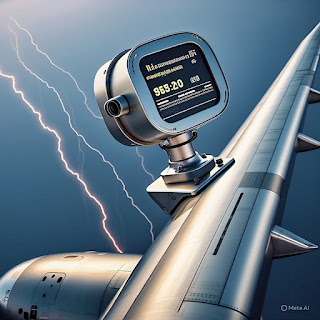High-Speed Aircraft and Missiles Composite Material Global Market Report 2022-2032: Evolving Operational Efficiency Requirements Driving Uptake of Composites in Aircraft Manufacturing
High-Speed Aircraft and Missiles Composite Material Global Market Report 2022-2032: Evolving Operational Efficiency Requirements Driving Uptake of Composites in Aircraft Manufacturing
Dublin, June 28, 2022 (GLOBE NEWSWIRE) -- The "High-Speed Aircraft and Missiles Composite Material Market - A Global and Regional Analysis: Focus on End User, Subsystem, Material, Manufacturing Process and Country - Analysis and Forecast, 2022-2032" report has been added to ResearchAndMarkets.com's offering.
The global high-speed aircraft and missiles composite material market was valued to be at $1,631.9 million in 2021, which is expected to grow with a CAGR of 2.47% during the forecast period 2022-2032 and reach $2,083.0 million by 2032. The growth in the global high-speed aircraft and missiles composite material market is expected to be driven by increasing defense spending on hypersonic and supersonic aircraft and missiles.
Market Lifecycle Stage
Over the past few years, there has been a drastic shift toward adopting composite materials over conventional metals. Moreover, the market has been witnessing a drift in the trend of using supersonic and hypersonic missiles and aircraft. With the increasing investment in missile defense spending and orders placed for supersonic military aircraft, the demand for composite material has also significantly increased.
Several projects are currently in progress to produce advanced composite materials that offer high strength and are lightweight, which improves the overall performance of aircraft, resulting in the proliferation of the high-speed aircraft and missiles composite material market.
Aircraft manufacturing engineers are testing materials for supersonic flight, which includes both innovative and traditional materials. Several factors such as performance, cost, strength, and weight are taken into consideration for the composite material selection of hypersonic and supersonic aircraft and missiles.
Carbon fiber laminates are widely used on aircraft and missile support structures. Also, high-modulus, high-thermal conductivity carbon fiber laminates with low moisture absorption resins, typically cyanate ester, are always used for manufacturing optical benches and other aircraft structures, which must sustain dimensional stability for accuracy.
Market Segmentation
by End User (Defense, Commercial)
Based on end user, the global high-speed aircraft and missiles composite material market in the end-user segment is expected to be dominated by the defense.
by Subsystem (Airframe, Propulsion, Avionics, Electrical System, Control System, Weapon System, Undercarriage, Other Systems)
Based on subsystem, the global high-speed aircraft and missiles composite material market is slightly more dominated by the airframe segment. The airframe of a fixed-wing aircraft consists of the five major units that include wings, fuselage, stabilizers, flight control surfaces, and landing gear. Plastic materials and metals such as magnesium, steel, aluminum, titanium, and their alloys are used in the structure of aircraft and missiles. Some of these plastics include reinforced plastic, transparent plastic, composite, and carbon-fiber materials.
by Material
- Fiber Types
- Resin Types
- Ceramic Matrix Composites (CMC)
by Manufacturing Process
- Automated Fiber Placement
- Compression Molding
- Additive Manufacturing
- Others
In 2021, the top segment players leading the market include established players providing composite material for the manufacturing of high-speed aircraft and missiles and constitute 60% of the presence in the market. Emerging market participants include start-up entities that account for approximately 15% of the presence in the market. High-speed aircraft and missiles composite material manufacturers and subsystem suppliers account for approximately 25% of the presence in the market.
Key Topics Covered:
1 Markets
1.1 Industry Outlook
1.2 Business Dynamics
1.2.1 Business Drivers
1.2.1.1 Evolving Operational Efficiency Requirements Driving Uptake of Composites in Aircraft Manufacturing
1.2.1.2 Increasing Defense Spending in the Missile Defense Segment Driving Uptake of Composite Materials
1.2.2 Business Challenges
1.2.2.1 Technical Challenges Associated with Hypersonic and Supersonic Aircraft and Missiles
1.2.2.2 High Material Cost and Requirement of Specialized Manufacturing Process
1.2.3 Business Opportunities
1.2.3.1 Evolution of Next-Gen Carbon Fiber Composites Enabling Next-Gen Aircraft and Missile Manufacturing
1.2.3.2 Growing Threat Perception due to Ukraine-Russia Conflict Driving Missile Defense Spending
1.2.4 Key Market Developments
1.2.5 Corporate Strategies (Partnerships, Collaborations, Agreements, and Contracts)
1.2.6 Business Strategies
1.2.7 Others
2 Application
2.1 Global High-Speed Aircraft and Missiles Composite Material Market - By End User
2.1.1 Overview
2.1.1.1 Demand Analysis of High-Speed Aircraft and Missiles Composite Material Market (by End User)
2.1.2 Commercial
2.1.2.1 Commercial Hypersonic and Supersonic Aircraft
2.1.3 Defense
2.1.3.1 Hypersonic and Supersonic Missile
2.1.3.2 Defense Hypersonic and Supersonic Aircraft
3 Products
3.1 Global High-Speed Aircraft and Missiles Composite Material Market - By Subsystem
3.1.1 Market Overview
3.1.1.1 Demand Analysis of High-Speed Aircraft and Missiles Composite Material Market (by Subsystem)
3.1.2 Hypersonic and Supersonic Aircraft Subsystem
3.1.2.1 Demand Analysis of High-Speed Aircraft and Missiles Composite Material Market (by Aircraft Subsystem)
3.1.3 Aircraft Subsystem
3.1.4 Missile Subsystem
3.2 Global High-Speed Aircraft and Missiles Composite Material Market - By Material
3.2.1 Market Overview
3.2.2 Fiber Types
3.2.3 Resin Types
3.2.4 Ceramic Matrix Composite (CMC)
3.3 Global High-Speed Aircraft and Missiles Composite Material Market - by Manufacturing Process
4 Region
5 Markets - Competitive Benchmarking & Company Profiles
6 Research Methodology
7 Growth Opportunities and Recommendations
7.1 Growth Opportunity 1: Hypersonic and Supersonic Missile Development
7.2 Growth Opportunity 2: Hypersonic and Supersonic Aircraft Development for High-Speed Air Travel Market
7.3 Growth Opportunity 3: Hypersonic and Supersonic Interceptor Development within Missile Defense Domain
Companies Mentioned
- ACPT Inc.
- General Dynamics Mission Systems
- Hexcel Corporation
- Kaman Corporation
- Solvay S.A.
- Teijin Limited
- Applied Composites Holdings, LLC
- Boston Materials, Inc.
- Cecence Ltd.
- SGL Carbon SE
- Boom Technology, Inc.
- Brahmos Aerospace Pvt. Ltd.
- Collins Aerospace
- Lockheed Martin Corporation
For more information about this report visit https://www.researchandmarkets.com/r/jvj828




Comments
Post a Comment